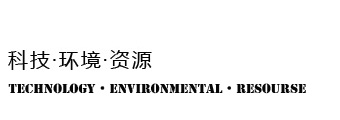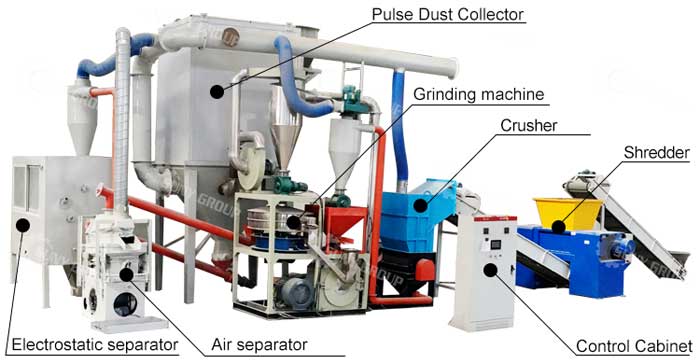Summary of scrap circuit board recycling technology production line and its characteristics of recycling
With the acceleration of the updating speed of electronic products, the amount of discarded printed circuit boards (PCBs), which are the main components of electronic waste, is also increasing. The environmental pollution caused by waste PCBs has also attracted the attention of various countries. Waste PCBs contain heavy metals such as lead, mercury, and hexavalent chromium, as well as toxic chemicals such as polybrominated biphenyls (PBB) and polybrominated diphenyl ethers (PBDE), which are used as flame retardant components. Groundwater and soil have caused huge pollution, which has brought great harm to people’s life and physical and mental health. On the waste PCB, there are nearly 20 kinds of non-ferrous metals and rare metals, which have high recovery value and economic value, and are a real mine waiting to be mined. It is estimated that discarded circuit boards account for about 3% of e-waste. Taking Dongguan City, Guangdong Province, where the electronics industry is well developed, as an example, more than 5,000 tons of waste circuit boards are produced every month, and the entire Guangdong Province exceeds 8,000 tons. In addition to a large number of discarded circuit boards produced in China, a large amount of electronic waste imported every year also contains a large number of discarded circuit boards. The following is a description of the relevant scrapped circuit boards and a summary of the production line technology:
PCB raw material
1. Sources of discarded circuit boards
There are two main sources of waste circuit boards, one is the printed circuit boards contained in discarded electronic and electrical products, and the other is the scraps and scraps formed during the production process of printed circuit boards. From computers and televisions to electronic toys, almost all electronic products contain printed circuit boards. Therefore, once electronic and electrical products are discarded, a large number of discarded circuit boards will be produced. With the rapid development of science and technology, electronic and electrical products are being eliminated faster and faster, and a large number of discarded circuit boards will be formed. In addition, according to relevant data, the scrap generated by the cutting process in the production process of printed circuit boards is as high as 24%.
Circuit Board Handling Line
2. Material composition of waste circuit boards
The recycling of waste circuit boards depends largely on the understanding of its material composition and structure. Therefore, it is necessary to determine the composition and content of various substances on waste circuit boards from a qualitative and quantitative perspective. Waste circuit boards are mainly composed of organic reinforced resin, glass fiber, copper foil and electronic components, which contain a large amount of valuable metals (such as copper, iron, aluminum, tin, lead, etc.), and also contain precious metals (such as gold, silver, platinum, etc.) , palladium, etc.), has high resource recovery value. However, waste circuit boards also contain lead, mercury, cadmium, chromium and other heavy metals and toxic and harmful substances such as polyvinyl chloride and halide flame retardants. Improper disposal will cause serious secondary pollution to the environment. Therefore, how to effectively realize the harmless recycling of waste circuit boards and realize their re-recycling is of great significance for reducing environmental pressure and preventing environmental pollution, improving the reutilization rate of secondary resources, and ensuring the sustainable development of my country’s economy, society and environment. very important.
Metal powder and non-metal
3. Metal materials contained in waste circuit boards
Waste circuit boards contain a large amount of recyclable non-metallic substances such as metals and plastics, which have high recycling value. The metals contained in waste circuit boards are divided into two categories: one is basic metals, such as aluminum, copper, iron, nickel, lead, tin, etc.; the other is precious metals and rare metals, such as gold, silver, platinum, palladium, etc. Generally speaking, the content of basic metals in scrap circuit boards is high, and the content of precious metals and rare metals is low.
Circuit board recycling equipment
4. Description of waste circuit board production line
The waste circuit board recycling equipment production line has added an automatic control device, which makes the entire process flow in an orderly manner, which not only reduces manual operations, but also reduces energy consumption and emissions, and improves work efficiency. First, disassemble the electronic components on the scrapped circuit board. The method of disassembly is electric heating. Through the friction between the roller and the board, the friction between the boards, the electronic components attached to the circuit board will fall off. The temperature is controlled at about 230 degrees, and the tin is recycled when it reaches the melting point of tin. Secondly, the waste circuit board is mainly composed of metal and electronic devices such as reinforced resin board and copper wire attached to the resin board after pretreatment. The disassembled waste printed circuit The board is mainly composed of a reinforced resin board and metals such as copper wires attached to it. The connection method is complicated, the hardness is high, and the toughness is strong. It is difficult to use a single crushing equipment to consume more energy, and there is no good balance between crushing efficiency and crushing effect. For this reason, the current circuit board recycling equipment adopts two-stage crushing. By analyzing the characteristics of the materials after two-stage crushing, it is a high-voltage electrostatic equipment. And lay the foundation for the application of specific gravity separation equipment. For the application of two-stage crushing and first-class crushing, Jixin circuit board recycling equipment manufacturer found through experiments that the metal dissociation degrees of the two materials are very different, and the first-class crushed materials contain more impurities and hard particles. Difficult to separate cleanly, it is easier to handle the material that is broken twice, and the metal is easier to separate with higher purity. The crushed circuit board powder can achieve 99.8% separation purity of metal through dust removal, high-voltage electrostatic separation, and specific gravity separation.








Leave a Comment